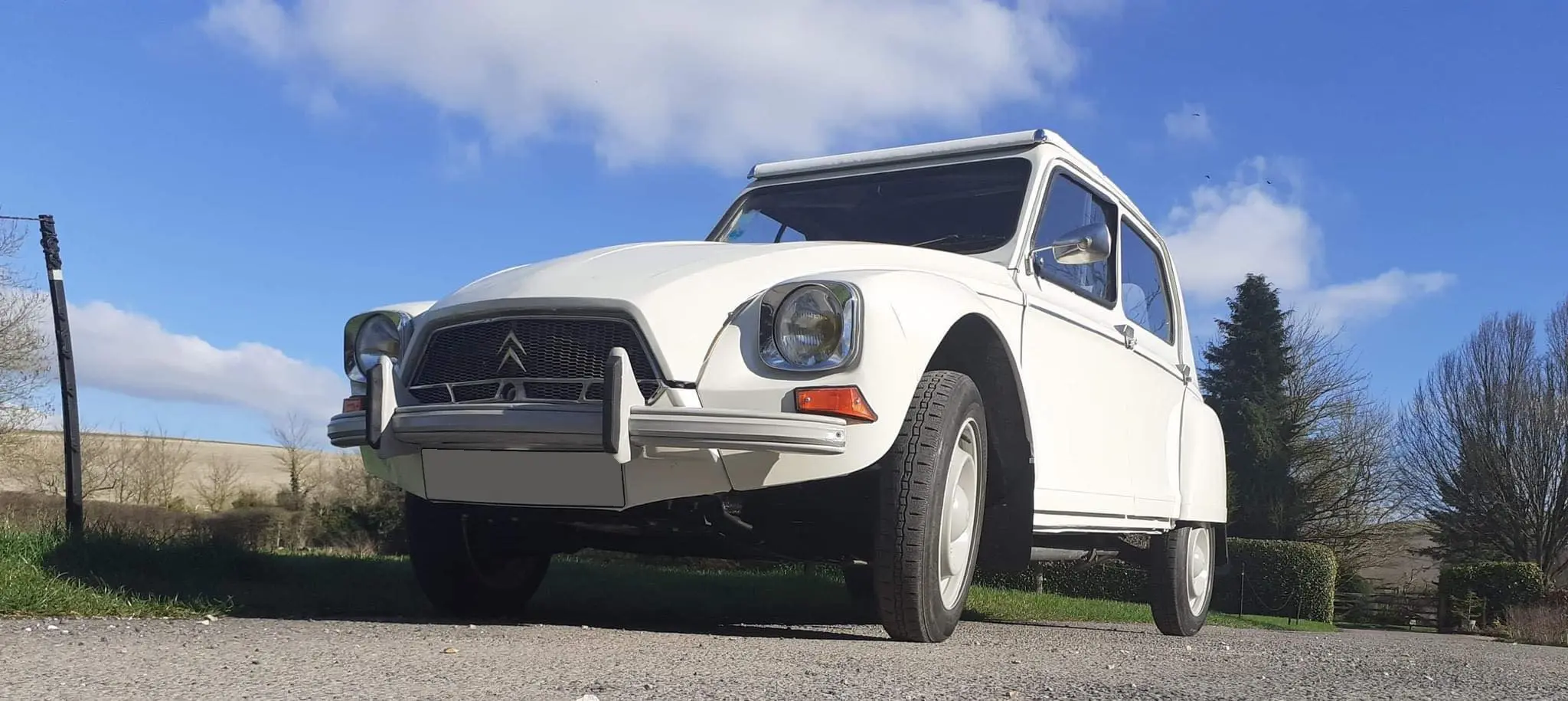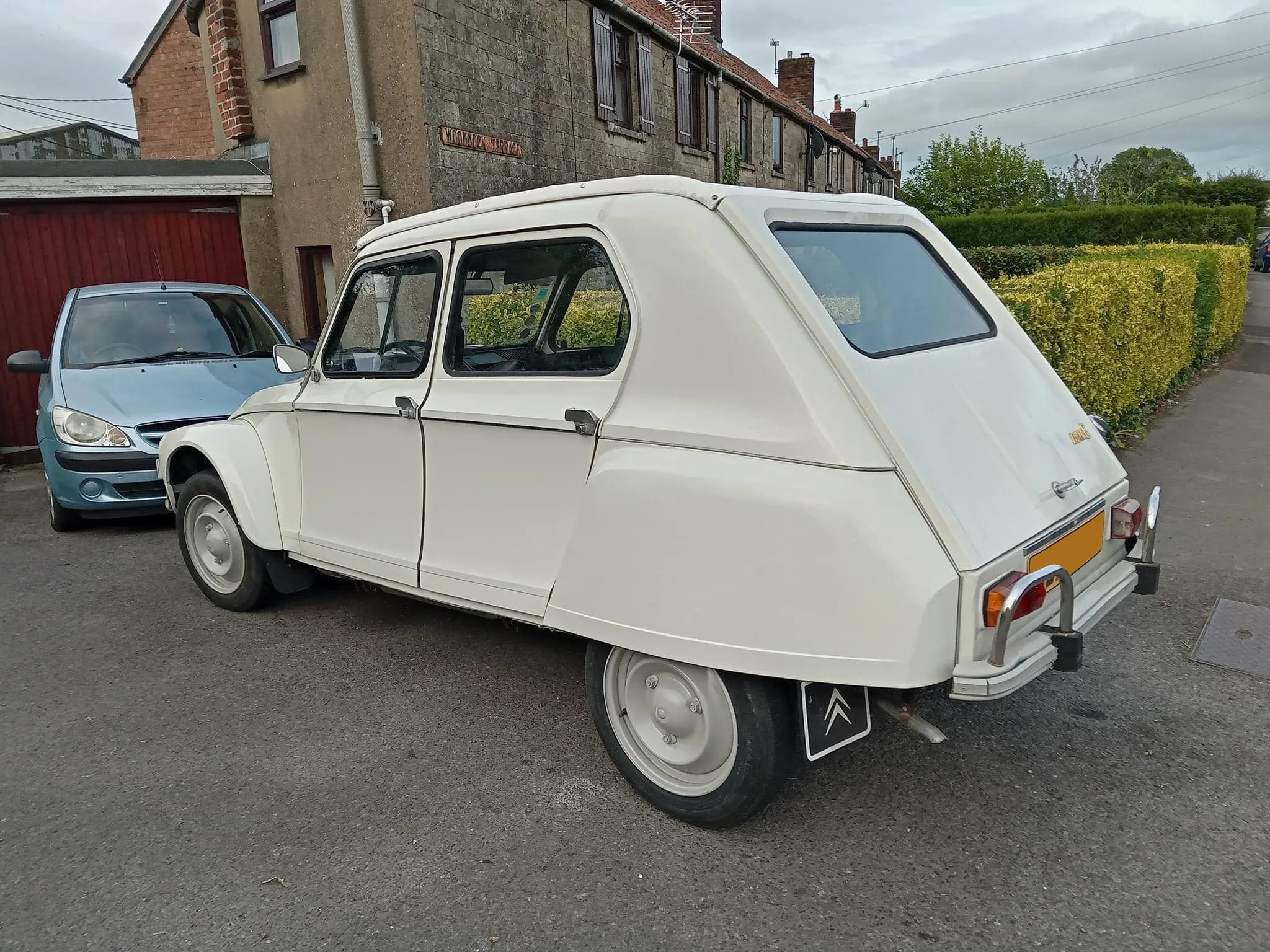Meet the Owner – Laurie Taylor-Reed and his 1969 Citroën Dyane 6
15 April 2024
The lower profile of the Dyane in the UK compared with its Citroën 2CV stablemate is one of the abiding mysteries of the classic car world. True, it had a shorter production run than the Deux Chevaux – 1967-1984 – but it offered almost all its virtues together with five doors and such creature comforts as a front ashtray. As Laurie, the owner of this fine 1969 example, observes:
The Dyane is definitely undervalued in the UK. It is far superior to the 2CV and better equipped. I find it lovely to drive, more stable than the Deux Chevaux, and with better gear ratios. The Dyane is also very practical and has a rear tailgate too. Plus, the sliding windows are a bonus, and there is less wind noise as it is more streamlined than 2CV.

The background of the Dyane is well-known. In the mid-1960s, Pierre Bercot, the Chairman of Citroën, saw that many younger motorists regarded the Deux Chevaux as spartan transport for their parent's generation and were defecting to the Renault 4. His response was Project AY, to be made on the same assembly lines as the 2CV and to use as many of the same components as possible. Panhard, part of the Citroën empire, devised the angular bodywork, and the 425cc Dyane made its bow in August 1967. 1968 saw the 6 version with a 602cc power plant join the range.
British sales began in 1969, and the motoring press enthused about the Dyane. The racing driver John Miles wrote in Autocar how he liked to: "drive around the outside and out-brake 'hard' men in their skittish Mk. 1 Capris and Mk. 2 Cortinas". Motor Sport raved, "What fun it is, this practical device from the Quai André Citroën", and Ian Fraser of Car magazine wrote: "Obviously there is a limit somewhere, but in the six weeks I had the Dyane, I never really found where it was".

The Dyane, and this is worth repeating, was also the first Flat-Twin Citroën to enjoy success in the UK. The Great British Public did not take to the 1953-1959 Slough-assembled 2CV, while official imports would not commence until 1974. Nor was the British market only Bijou, a Deux Chevaux with locally designed two-door bodywork overly popular, while the Ami 6 was available in the UK only to special order.
Laurie sourced his Citroën "through Gary Dicks of 2CV Imports in Wiltshire – I believe it came from a barn in Toulouse". It sports the distinctive 'four-window' styling of the pre-1970 models and has all the familiar Dayne idiosyncrasies; the separate starter button, the fan-less heater and the truly remarkable cornering. The equipment list included a starting handle, but Laurie remarks he has not yet had the need to use it. As for road manners: “The Dyane is not bad in modern traffic. At 65/70 mph on motorway flat ground, it seems to keep up ok. The acceleration is a little slower than the modern stuff, but as long as you anticipate there are no problems”.

When out and about in the Citroën, Laurie finds "50/50 recognise as a Dyane, but a lot think it's a 2CV". Such confusion is partially the result of its rarity, despite Citroën building 1,443,493 examples. Yet, as I once wrote in Classic Car Weekly:
In Britain of the 1970s, they really could be seen everywhere. No school run would have been complete without at least one beige-coloured Dyane 6 amongst the Ford Escort XLs, and, in Hampshire at least, it was not uncommon to overtake a Citroën laden with bales of hay.
And perhaps the chief difference between the Dyane and the 2CV is while both can safely carry a basket of eggs across a ploughed field, the former is for the motorist who does not feel the need to do so.
With Thanks To: Laurie Taylor-Reed
